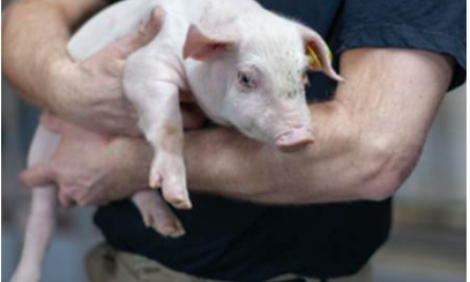



Effect of Urinary Acidifier on Reproduction Performance in Sows
Urinary tract infections (UTI) and Postpartum Disgalactia Syndrome (PPDS) syndrome are among the most common health problems in sow herds. Both diseases are caused by bacterial infections and influence the fertility of the sow herd.From 17 to 40% of sows suffer from UTI, which consequentially leads to increased non-productive days, early cullings and decreased litters/sows/year (Saoulidis et al., 2000).
The UTI include cystitis, inflammation of the urinary bladder, and pyelonephritis, ascendant inflammation into kidneys. Furthermore UTI are considered as predisposing factor for the upper genital tract inflammations (oviduct and uterus), which also lead to PPDS problems. The bacteria attach to the mucosa of urogenital tract by interactions between bacterial surface adhesions and complementary epithelial cell receptors, and stimulate cytokine release resulting in an inflammatory response and symptoms. However, the clinical signs of UTI are commonly overlooked in commercial farms or they are absent. Typically sows with significant bacteriuria are more often seen in the dog sitting position, have inferior body condition, longer weaning-to-service interval, low fertility rates and tend to wean small litters. Various health, environmental and management factors can contribute to UTI. For example, constipation, traumas to the urethra and bladder at parturition, assistance at farrowing, retained placenta or fluids, poor sanitized floor in farrowing crates, poor water quality, which leads to reduced water intake in sows, and ultimately reduced urination (Maes et al., 1998).
The flora of the vagina of healthy sows consists of a wide range of bacteria, including Streptococcus spp., Staphylococcus spp., Enterobacteria, Corynbacterium, Micrococcus spp. and Actinobacillus spp. Many of these bacteria especially E. coli, Actinobaculum suis, Pseudomonas aeruginosa, Klebsiella spp., Streptococcus faecalis, Streptococcus suis are frequently reported in clinical cases of urogenital tract infections. The highest isolation rates of these bacteria were obtained on the day of farrowing and the second highest number of positive samples was found immediately after mating. It is reported that parturition and a dietary change result in an upgrowth of E. coli and other bacteria in the reproductive tract of sows (MacLean and Thomas, 1974). The bacteria invasion is favored by acid-base unbalance in sows’ diets, bringing out an increase of urine pH. Various studies have confirmed that acid-base balance (ACB) of the diet directly correlates with urinary pH value and total bacteria colony forming units in urine (Dee et al., 1994; DeRouchey et al., 2003). The ACB of conventional sows diets have a range of +200 to +600 mmol/kg feed, which makes the urine pH greater than 7. It is known that a urinary pH below 6.5 can significantly reduce the number of bacteria excreted with urine. The alkaline environment also inhibits the growth of competitive microflora and promotes the precipitation of the urinary salts and crystals. Such precipitates not only further increase inflammatory changes in the bladder mucosa but also provide a nidus for the bacterial growth and protection from antibiotics and host defense mechanisms.
Diets supplemented with urinary tract acidifier based on a combination of natural plant extracts, inorganic acids and anionic substances decreases the urinary pH via lowering the ACB of the diet by means of the anionic substances and inorganic acids. Moreover, due to the mode of action of inorganic acid and anionic substances Ca-mobilization mechanisms is triggered resulting in the higher Ca2+ availability in the blood. High Ca2+ amounts are necessary for the uterus muscle contraction at farrowing, preventing laborious, long lasting farrowing and saving healthy piglets from condemnation to death. Additionally it is known that the natural plant extracts containing proanthocanidins inhibit the adhesion of pathogenic bacteria, especially E. coli to urinary tract cell walls.
In the present study, the efficacy of the urinary tract acidifier on the decrease of urine pH and reproductive performance in sows was evaluated.








